
Leone: The Heartbeat of American Samoa
Discover Leone, the cultural and historical gem of American Samoa, where traditional Samoan life meets breathtaking natural landscapes.
Leone, a charming village located on the island of Tutuila in American Samoa, offers a unique blend of natural beauty, rich history, and vibrant culture. Known for its welcoming people and stunning landscapes, Leone provides an unparalleled experience for those looking to explore the Pacific. Visitors can take a leisurely stroll through the village to admire its traditional Samoan fale houses and lush gardens. The area's beaches, with their golden sands and clear waters, are perfect for relaxation and water activities. Don't miss the chance to explore Leone's fascinating historical sites, including remnants of the ancient Samoan civilization and the picturesque Leone High School, one of the oldest educational institutions in the territory. Leone's warm and friendly community is always eager to share their customs and traditions with visitors. Attend a local church service to experience the harmonious Samoan hymns or join in on a fiafia night where you'll be treated to traditional dance, music, and a feast of local delicacies. Whether you're an adventurer at heart or seeking a tranquil retreat, Leone offers something for everyone.
Local tips in Leone
- Visit Leone Falls. This lesser-known spot is a hidden gem perfect for a refreshing swim and a picnic.
- Attend a Sunday church service. Experience the powerful and moving Samoan hymns.
- Try local dishes such as palusami and oka at village eateries for an authentic taste of Samoan cuisine.
- Respect local customs. When visiting, dress modestly and always ask for permission before taking photos of people or their property.
Leone: The Heartbeat of American Samoa
Leone, a charming village located on the island of Tutuila in American Samoa, offers a unique blend of natural beauty, rich history, and vibrant culture. Known for its welcoming people and stunning landscapes, Leone provides an unparalleled experience for those looking to explore the Pacific. Visitors can take a leisurely stroll through the village to admire its traditional Samoan fale houses and lush gardens. The area's beaches, with their golden sands and clear waters, are perfect for relaxation and water activities. Don't miss the chance to explore Leone's fascinating historical sites, including remnants of the ancient Samoan civilization and the picturesque Leone High School, one of the oldest educational institutions in the territory. Leone's warm and friendly community is always eager to share their customs and traditions with visitors. Attend a local church service to experience the harmonious Samoan hymns or join in on a fiafia night where you'll be treated to traditional dance, music, and a feast of local delicacies. Whether you're an adventurer at heart or seeking a tranquil retreat, Leone offers something for everyone.
When is the best time to go to Leone?
Iconic landmarks you can’t miss
Samoa Cultural Village
Explore the rich traditions and vibrant culture of Samoa at the Samoa Cultural Village, a unique tourist attraction in Apia.
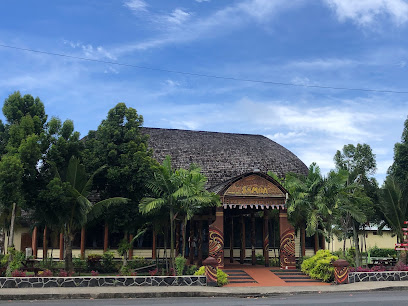
Robert Louis Stevenson Museum
Explore the Robert Louis Stevenson Museum in Apia, Samoa, where literature and culture beautifully intertwine amid stunning landscapes.
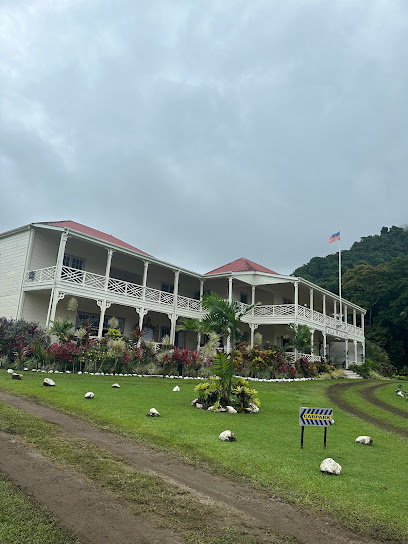
Papaseea Sliding Rocks
Experience the thrill of sliding into refreshing pools at Papaseea Sliding Rocks, a must-visit natural attraction in beautiful Samoa.
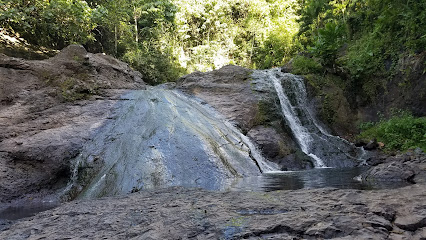
National Park of American Samoa
Unveil the extraordinary landscapes and cultural richness of the National Park of American Samoa, a true gem for nature lovers and adventure seekers.
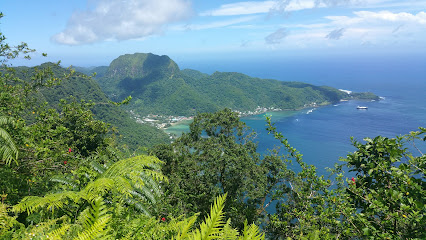
Swimming With Turtles
Discover the magic of swimming with sea turtles in Samoa's stunning waters, a must-do adventure for nature lovers and families alike.
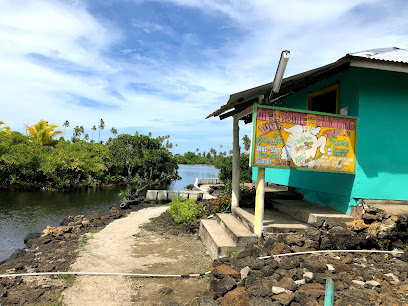
National Park of American Samoa Visitor Center
Explore the gateway to the stunning landscapes and rich culture of the National Park of American Samoa at the Visitor Center in Fagatogo.
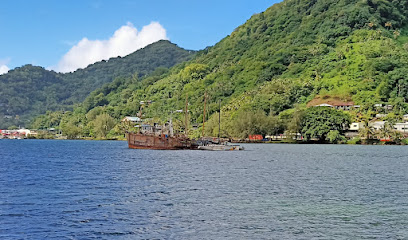
Lalomanu Beach Fales
Discover the stunning beauty and cultural richness of Lalomanu Beach Fales, a tropical paradise on the southern coast of Samoa.
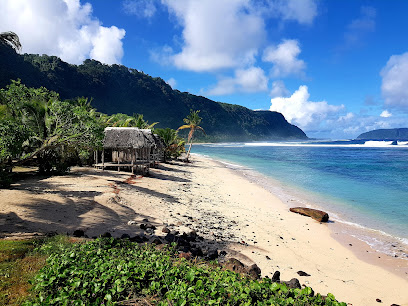
Jean P Haydon Museum
Discover the vibrant culture and history of American Samoa at the Jean P Haydon Museum, a must-visit for all travelers seeking deeper connections.

Leone High School
Explore the vibrant educational spirit of Leone High School in Vailoatai, a cultural landmark showcasing the heart of Samoa's future.

OFFDAROCK TATTOOS AMERICAN SAMOA
Experience the art of tattooing at OffdaRock Tattoos in Pago Pago, where culture meets creativity in every design.
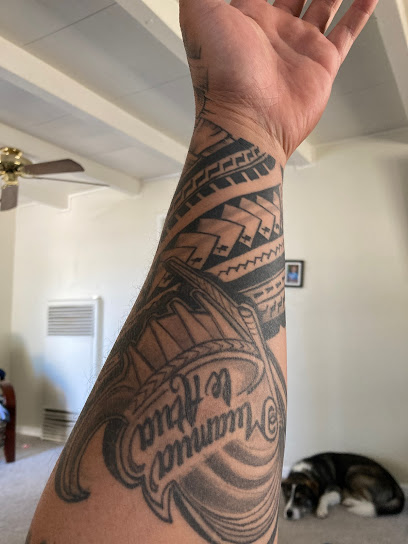
Vai'ava Strait National Natural Landmark
Discover the enchanting beauty of Vai'ava Strait National Natural Landmark in American Samoa, a paradise for nature lovers and adventure seekers.
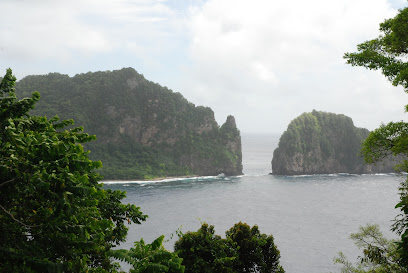
Fogamaa Crater National Natural Landmark
Discover the breathtaking landscapes and rich biodiversity at Fogamaa Crater National Natural Landmark, a true gem in American Samoa's natural heritage.
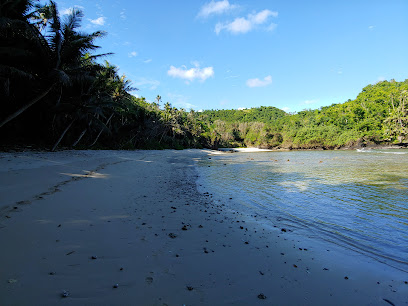
Turtle and Shark
Discover the breathtaking beauty of Turtle and Shark in Vaitogi, a serene scenic spot perfect for relaxation and nature exploration.
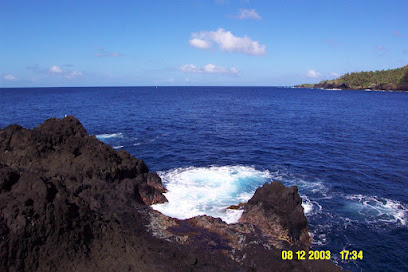
Blunts Point Trail
Explore the breathtaking Blunts Point Trail in Utulei, where stunning views and lush landscapes await every adventurous hiker.
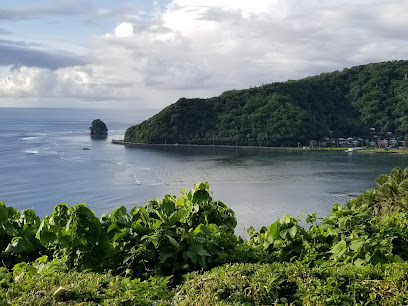
Tauese P. F. Sunia Ocean Center
Discover the vibrant marine life and conservation efforts at Tauese P. F. Sunia Ocean Center, an educational gem in American Samoa.
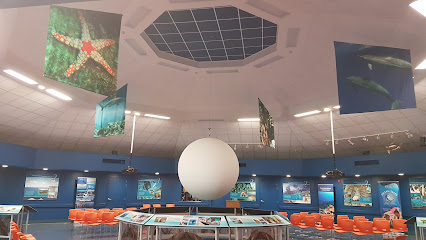
Essential places to dine
McDonald's
Discover comfort food at McDonald's in Tafuna - where global flavors meet local hospitality in the heart of American Samoa.
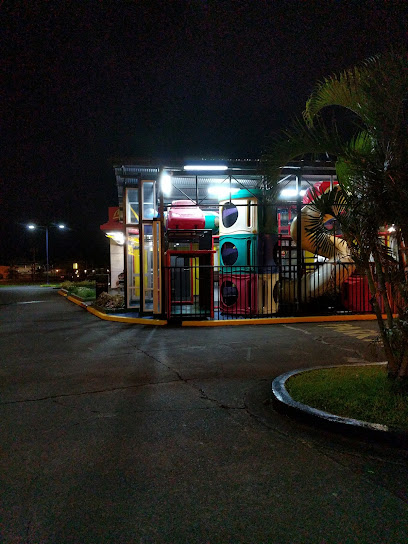
Tisa's Barefoot Bar
Experience tropical dining at Tisa's Barefoot Bar in Alega—where fresh seafood meets stunning ocean views for an unforgettable meal.
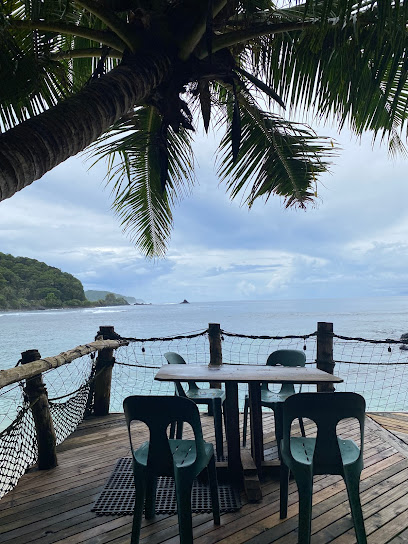
DDW Restaurant
Discover delightful local cuisine and breathtaking ocean views at DDW Restaurant in Utulei - a true taste of paradise.
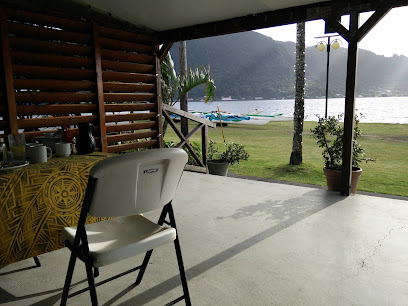
The Koko Bean Cafe
Experience the authentic tastes of Samoa at The Koko Bean Cafe – where local ingredients meet cozy ambiance.

Carl's Jr.
Experience delicious fast food at Carl's Jr., located in Laufou Shopping Center, Nuuuli Village – where American classics meet island charm.
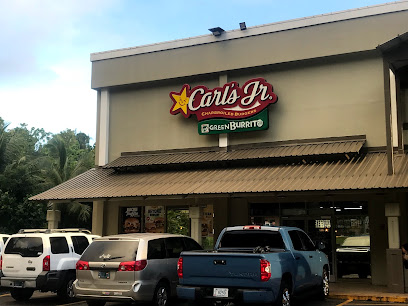
Paradise Pizza
Experience authentic pizza flavors at Paradise Pizza in Pago Pago—where every slice feels like paradise.

Cecilias Restaurant & Bar
Experience authentic Samoan cuisine at Cecilias Restaurant & Bar in Pago Pago - where every meal is a celebration of local flavors.
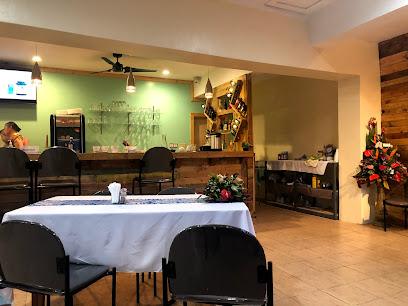
Milovales Burgers and Fish & Chips
Discover delicious burgers and crispy fish & chips at Milovales in Nu'uuli - a must-visit for every tourist in American Samoa!
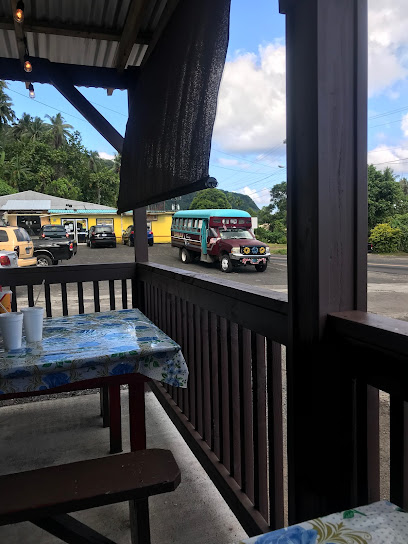
Tropical Chicken and Pizza
Savor delicious pizza and succulent chicken in a tropical paradise at Tropical Chicken and Pizza in Pago Pago.
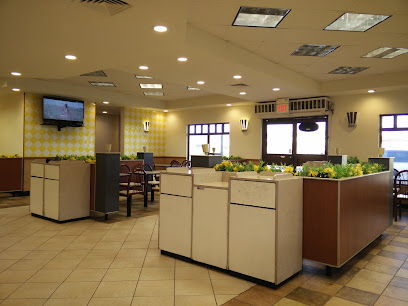
Oasis
Savor authentic Korean cuisine at Oasis in Tafuna—where every dish tells a story.
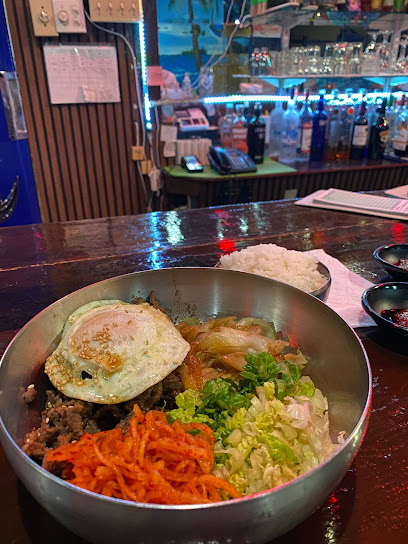
Flying Fox Gastropub
Experience the best of local cuisine at Flying Fox Gastropub in Pago Pago - where every dish tells a story.
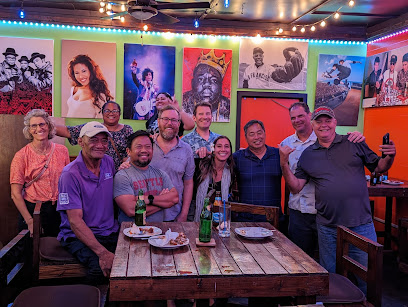
T J D - Pho Vietnamese Restaurant
Savor authentic Vietnamese cuisine at T J D - Pho Vietnamese Restaurant in Malaeimi – your gateway to delicious pho and more.
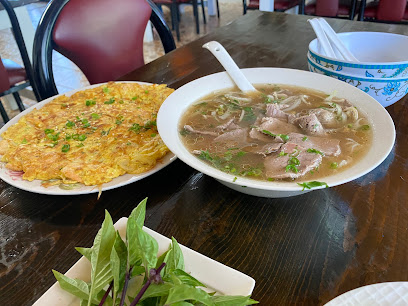
Dickies Diner
Experience delicious fast food at Dickies Diner in Tafuna - a local favorite offering tasty bites in a welcoming atmosphere.
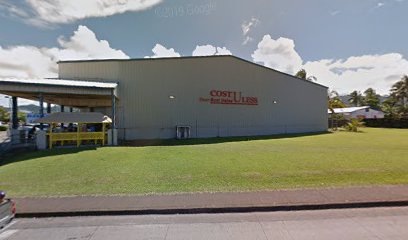
Manuia Restaurant
Experience authentic Korean cuisine at Manuia Restaurant in Tafuna - where flavor meets hospitality in a vibrant setting.
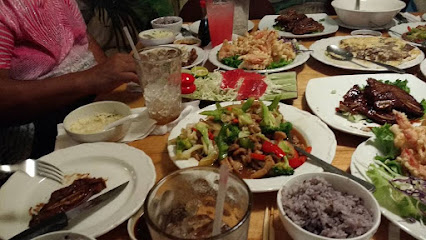
Nina’s Restaurant
Experience authentic flavors at Nina’s Restaurant in Tafuna - where local cuisine meets international flair for an unforgettable dining experience.
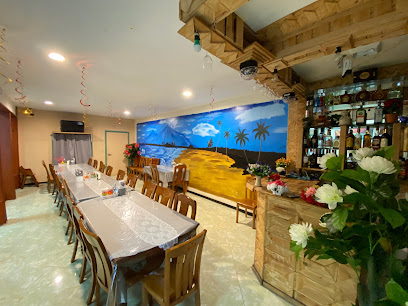
Markets, malls and hidden boutiques
KS Mart
Explore the heart of Tafuna at KS Mart, your local grocery destination for fresh produce and authentic Samoan flavors.
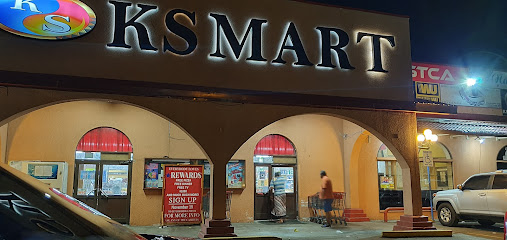
Laufou Shopping Center
Explore Laufou Shopping Center in Nu'uuli for a delightful shopping experience with diverse stores and delicious dining options.
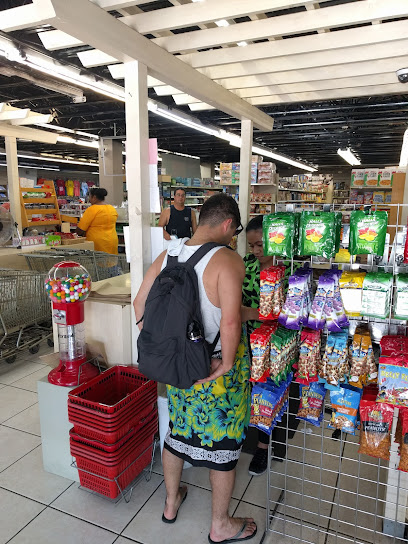
Neil's Ace Home Center
Explore Neil's Ace Home Center for a unique selection of home goods and local crafts in Malaeimi, perfect for enhancing your travel experience.
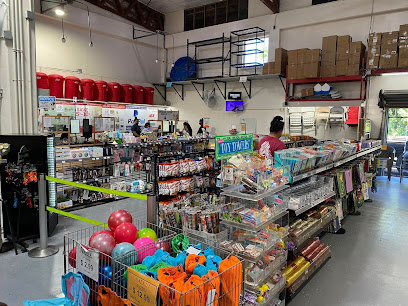
Cost.U.Less
Explore Cost.U.Less in Pago Pago for unbeatable prices on groceries and local goods, making your stay in American Samoa even more enjoyable.
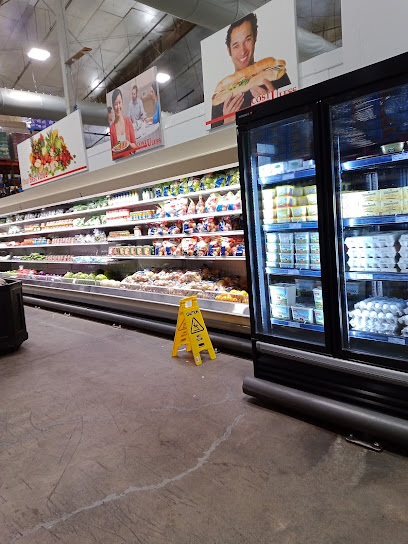
TSM Mart
Experience the vibrant local culture at TSM Mart, your go-to grocery store in Tafuna for fresh produce and international delights.

US AAFES American Samoa Post Exchange
Discover the unique offerings and community spirit at the US AAFES American Samoa Post Exchange, a shopping gem in Tafuna.
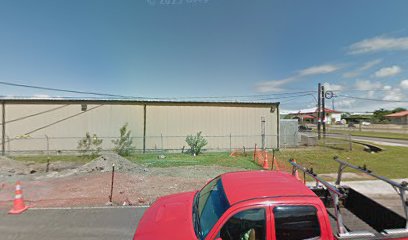
Manu'a Store
Explore the charm of Manu'a Store in Nu'uuli, Eastern District - your destination for unique home goods and local treasures.

Forsgren
Discover the vibrant selection of local and international products at Forsgren, your go-to supermarket in Nu'uuli, Eastern District.
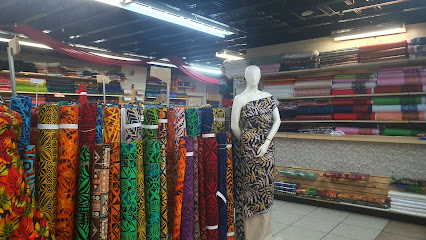
KT Mart
Explore KT Mart in Nu'uuli for an exceptional clothing shopping experience, featuring a wide range of apparel and accessories for all styles.
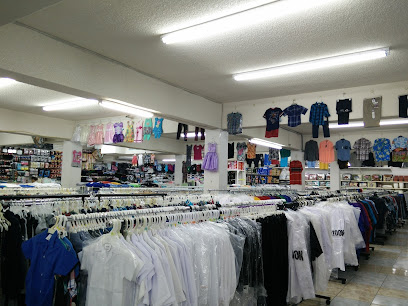
Shin's Store
Experience local flavors and friendly service at Shin's Store in Pava'ia'i, your ultimate destination for grocery shopping.
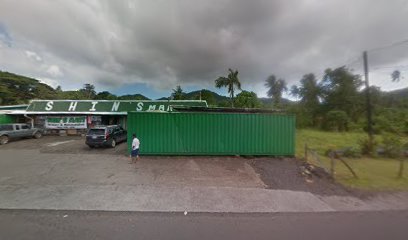
Tropik Traders
Discover authentic local fashion at Tropik Traders, the charming clothing store in Nu'uuli, showcasing unique apparel, jewelry, and accessories.
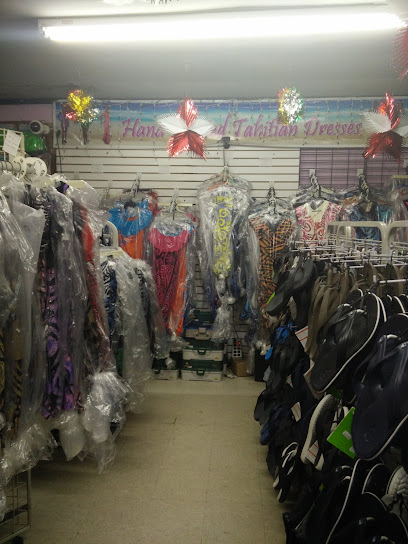
Shoe Tree
Discover the Shoe Tree in Nu'uuli, a captivating landmark that showcases local culture and creativity with its unique display of shoes.
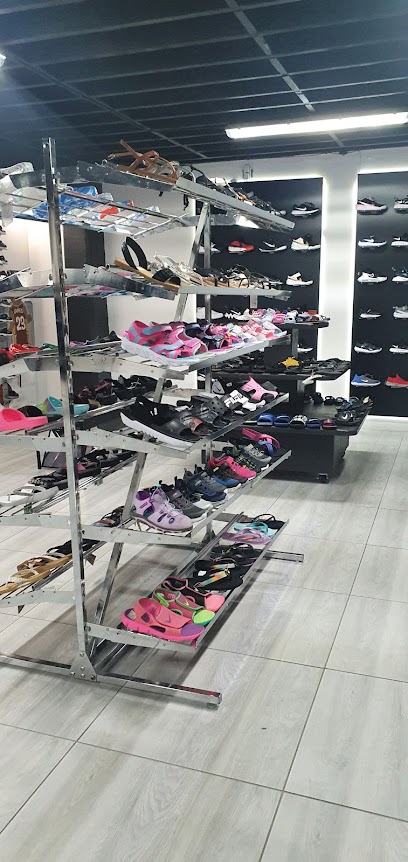
GCC Store
Visit GCC Store in Ili'ili for a taste of local life, offering fresh produce and unique snacks in a vibrant supermarket atmosphere.
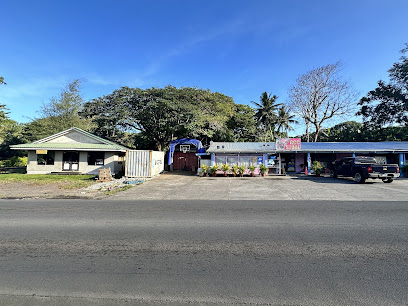
Happy Mart Bakery
Discover the delightful flavors of Happy Mart Bakery in Nu'uuli, where sweet treats and local charm come together for an unforgettable experience.
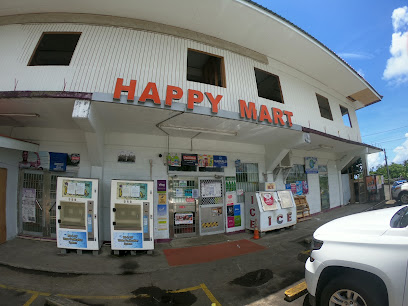
F.J & P Kruse Inc.
Explore local flavors and fresh produce at F.J & P Kruse Inc. in Leone, a charming grocery store experience for every traveler.
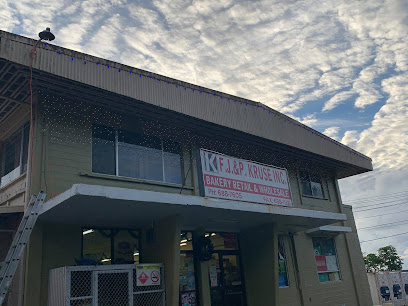
Essential bars & hidden hideouts
Tisa's Barefoot Bar
Experience the essence of island living at Tisa's Barefoot Bar, where delicious food meets stunning ocean views for an unforgettable dining experience.
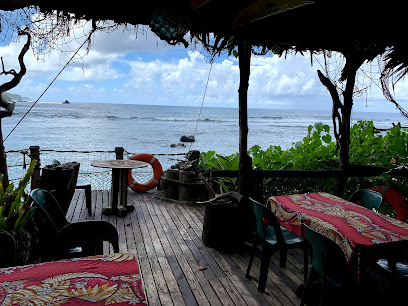
The Koko Bean Cafe
Discover the culinary delights at The Koko Bean Cafe, a cozy eatery in Nu'uuli offering diverse local flavors and a welcoming atmosphere.
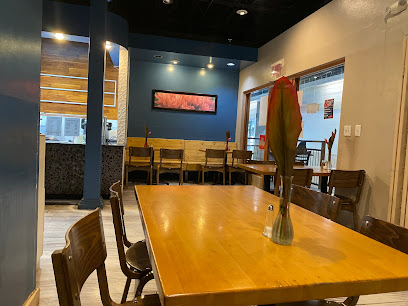
Cecilias Restaurant & Bar
Discover the flavors of American Samoa at Cecilia's Restaurant & Bar, where local ingredients meet international cuisine in a vibrant setting.

Oasis
Discover authentic Korean flavors at Oasis in Tafuna, where each dish tells a story of tradition and taste.
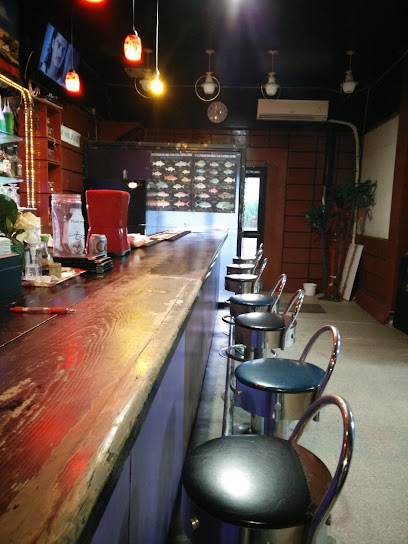
Flying Fox Gastropub
Discover a culinary treasure at Flying Fox Gastropub, blending local flavors with international flair in the heart of Pago Pago.
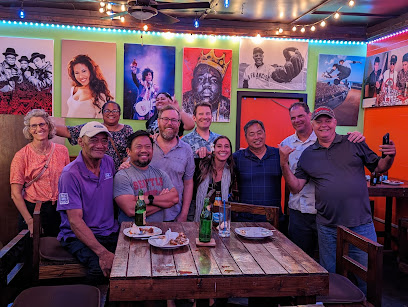
Paradise Bar & Grill
Experience the vibrant culture and flavors of American Samoa at Paradise Bar & Grill, the perfect spot for dining and relaxation.
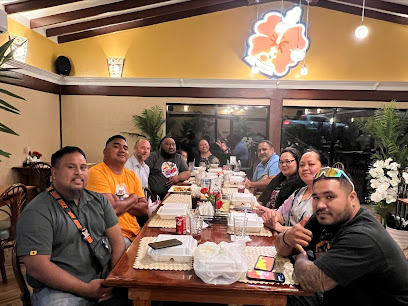
Manuia Restaurant
Discover the authentic taste of Korea at Manuia Restaurant, a hidden gem in Tafuna, offering a vibrant culinary experience for all food lovers.
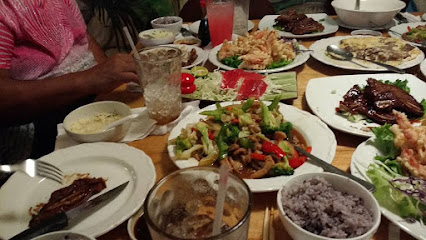
Nina’s Restaurant
Experience the vibrant flavors of Samoa at Nina’s Restaurant in Tafuna, where delicious cuisine meets warm hospitality.
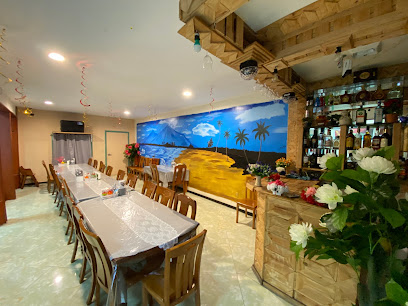
LuluLosa Beach Fales Bar & Grill
Experience the best of Samoan cuisine at LuluLosa Beach Fales Bar & Grill, where stunning ocean views meet delicious local flavors.
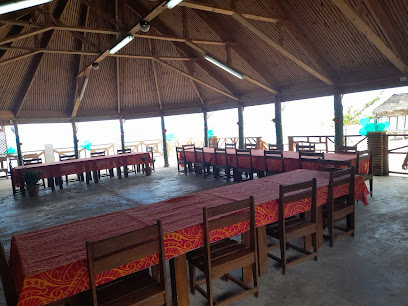
A&E Cafe
Explore the unique flavors of A&E Cafe, where American diner classics meet Samoan culinary traditions in a cozy Tafuna setting.
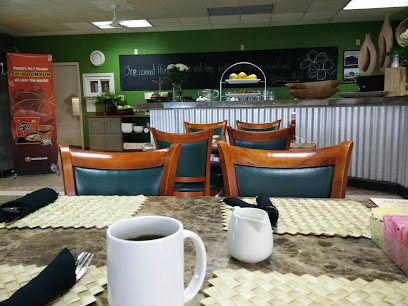
Emelio's Restaurant
Discover authentic Samoan cuisine at Emelio's Restaurant, a must-visit culinary destination in Pago Pago, blending local flavors with warm hospitality.
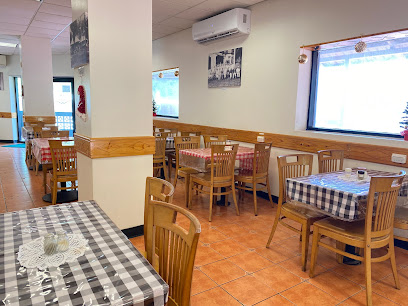
Moon Korean Restaurant
Discover the rich flavors of Korea at Moon Korean Restaurant, a must-visit dining destination in Leloaloa, Eastern District.
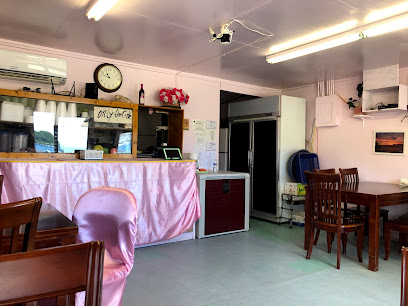
Anita's Beach Bar/Restaurant
Experience the vibrant flavors and breathtaking views at Anita's Beach Bar in Lalomanu, Samoa, the perfect spot for relaxation and socializing.
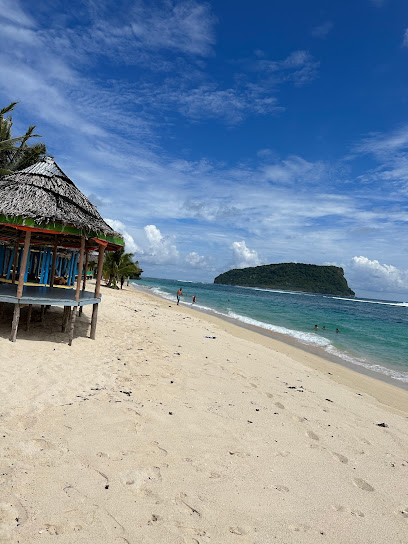
Local Delights Eatery, American Samoa
Discover the authentic taste of American Samoa at Local Delights Eatery, where traditional flavors meet island hospitality.
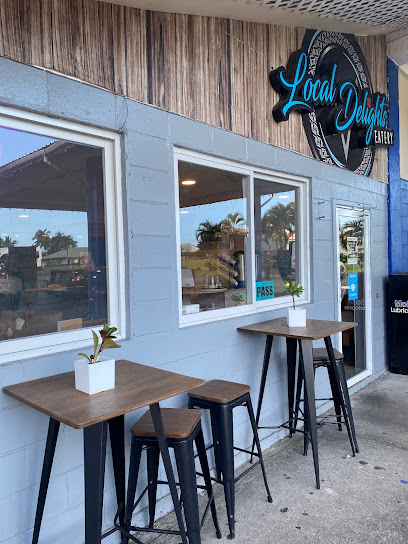
Food Bar
Discover the fast food delight at Food Bar in Tafuna, where quick bites meet local flavors in a friendly atmosphere.
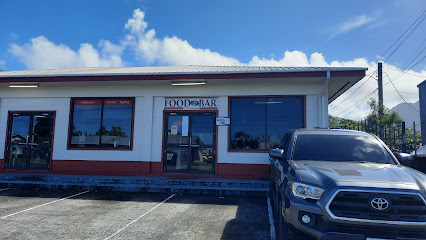
Local Phrases
-
- HelloTalofa
[Tah-loh-fah] - GoodbyeFa
[Fah] - YesIoe
[Ee-oh-eh] - NoLeai
[Leh-ai] - Please/You're welcomeFa'amalie
[Fah-ah-mah-lee-eh] - Thank youFa'afetai
[Fah-ah-feh-tie] - Excuse me/SorryFa'amalie atu
[Fah-ah-mah-lee-eh ah-too] - How are you?O ai oe?
[Oh eye oh-eh] - Fine. And you?Lelei. O a ou te?
[Leh-leh-ee. Oh ah oh-oo teh] - Do you speak English?E te lelei ona tusia i le fa'ailoa ma le fa'ainga o le gafa
[Eh teh leh-leh oh-nah too-see-ah ee leh fah-ah-ee-loh-ah mah leh fah-ah-een-gah oh leh gah-fah] - I don't understandAe le aoe
[Ah-eh leh ah-oh-eh]
- HelloTalofa
-
- I'd like to see the menu, pleaseOu te fia va'aia le itu upu, fa'amalie atu
[Oh-oo teh fee-ah vah-ah-ee-ah leh ee-too oo-poo, fah-ah-mah-lee ah-too] - I don't eat meatAe le oua 'ai aiga
[Ah-eh leh oh-oo-ah eye eye-ngah] - Cheers!Manuia!
[Mah-noo-ee-ah] - I would like to pay, pleaseOu te fia totogi, fa'amalie atu
[Oh-oo teh fee-ah toh-toh-gee, fah-ah-mah-lee ah-too]
- I'd like to see the menu, pleaseOu te fia va'aia le itu upu, fa'amalie atu
-
- Help!Tulou!
[Too-loh-oo] - Go away!A'e i le itu
[Ah-eh ee leh ee-too] - Call the Police!Fa'afesoota'i leoleo!
[Fah-ah-feh-soh-oh-tah-ee leh-oh-leh-oh] - Call a doctor!Fa'afeso'i foma'i!
[Fah-ah-feh-soh-ee foh-mah-ee] - I'm lostUa ou taula'i
[Oo-ah oh-oo tow-lah-ee] - I'm illUa ou mafati
[Oo-ah oh-oo mah-fah-tee]
- Help!Tulou!
-
- I'd like to buy...Ou te fia fa'atau...
[Oh-oo teh fee-ah fah-ah-tah-oo...] - I'm just lookingOu te va'ai fa'apea
[Oh-oo teh vah-ah-ee fah-ah-peh-ah] - How much is it?E fia le tupe?
[Eh fee-ah leh too-peh] - That's too expensiveO lea e lelei
[Oh leh-ah eh leh-leh-ee] - Can you lower the price?E mafai ona fa'atatau le tupe?
[Eh mah-fah-ee oh-nah fah-ah-tah-too leh too-peh]
- I'd like to buy...Ou te fia fa'atau...
-
- What time is it?O le a le taimi?
[Oh leh ah leh tah-ee-mee] - It's one o'clockO le tasi
[Oh leh tah-see] - Half past (10)I le itula
[Ee leh ee-too-lah] - MorningTaeao
[Tah-eh-ah-oh] - AfternoonAfiafi
[Ah-fee-ah-fee] - EveningTotonu
[Toh-toh-noo] - YesterdayAnanafi
[Ah-nah-nah-fee] - TodayAso nei
[Ah-soh neh-ee] - TomorrowAso o le a
[Ah-soh oh leh ah] - 1Tasi
[Tah-see] - 2Lua
[Loo-ah] - 3Tolu
[Toh-loo] - 4Fa
[Fah] - 5Lima
[Lee-mah] - 6Ono
[Oh-noh] - 7Fitu
[Fee-too] - 8Valu
[Vah-loo] - 9Iva
[Ee-vah] - 10Sefulu
[Seh-foo-loo]
- What time is it?O le a le taimi?
-
- Where's a/the...?O fea le...
[Oh feh-ah leh] - What's the address?O le a le tusi tupe?
[Oh leh ah leh too-see too-peh] - Can you show me (on the map)?E mafai ona fa'ailoa ia te a'u (i le mapa)?
[Eh mah-fah-ee oh-nah fah-ah-ee-loh-ah ee-ah teh ah-oo (ee leh mah-pah)] - When's the next (bus)?O le a le taimi mo le aso nei?
[Oh leh ah leh tah-ee-mee moh leh ah-so neh-ee] - A ticket (to ....)Tiketi (i le ....)
[Tee-keh-tee (ee leh)]
- Where's a/the...?O fea le...
History of Leone
-
Leone, a village located on the island of Tutuila in American Samoa, has been inhabited for over a thousand years. The indigenous people, known as Samoans, have a rich cultural heritage characterized by their traditional social structure known as the 'fa'a Samoa'. This system emphasizes respect for family, community, and the environment. The early settlers of Leone built impressive stone platforms called 'tia'ave' and intricate star mounds known as 'tia'ula', which were used for ceremonial purposes and social gatherings.
-
In 1832, the London Missionary Society sent John Williams to Samoa, including Leone. Williams' arrival marked the beginning of significant cultural changes as he introduced Christianity to the islanders. The local chiefs and people of Leone embraced the new religion, leading to the establishment of the first Christian church in the village. This period saw the construction of churches and schools, which played a crucial role in shaping the village's social and educational landscape.
-
The late 19th and early 20th centuries were transformative for Leone and the rest of American Samoa. In 1899, the Tripartite Convention was signed, dividing the Samoan Islands between Germany and the United States. Leone became part of American Samoa. The U.S. Navy took administrative control in 1900, leading to infrastructural developments such as roads, medical facilities, and a more organized educational system. The influence of American governance introduced new political and social dynamics to the village.
-
During World War II, American Samoa, including Leone, played a strategic role in the Pacific theater. The island became a critical supply and transit point for Allied forces. The presence of military bases brought economic opportunities and infrastructural improvements but also led to cultural exchanges and shifts. The war period saw the construction of military installations, airstrips, and roads that significantly altered the physical and social landscape of Leone.
-
After World War II, Leone, like the rest of American Samoa, experienced a period of modernization. The introduction of modern amenities, improved healthcare, and expanded educational opportunities contributed to significant social advancements. Despite these changes, the village has managed to preserve its traditional Samoan culture. Cultural practices, language, and community events remain integral to daily life in Leone, reflecting a blend of modernity and tradition.
-
In December 1991, Cyclone Val struck American Samoa, causing widespread devastation in Leone. The powerful storm damaged homes, infrastructure, and natural landscapes. In the aftermath of the cyclone, the community demonstrated remarkable resilience and solidarity. Reconstruction efforts were swift, with assistance from both local and international sources. This period highlighted the strength and unity of Leone's residents, reinforcing their commitment to rebuilding and preserving their village.
Leone Essentials
-
Leone is located on the island of Tutuila in American Samoa. The main entry point to American Samoa is Pago Pago International Airport (PPG), which is approximately 14 kilometers from Leone. Flights to Pago Pago are available from Honolulu, Hawaii. Once you arrive at the airport, you can take a taxi or rent a car to reach Leone. The drive from the airport to Leone takes about 20-30 minutes.
-
In Leone, transportation options include rental cars, taxis, and the local bus service known as 'aiga buses.' Aiga buses are colorful and provide an affordable way to travel around the island, though they may not adhere to strict schedules. Taxis are available and can be convenient for shorter trips. Renting a car is recommended if you wish to explore the island at your own pace.
-
The official currency of American Samoa is the United States Dollar (USD). Credit cards are accepted in some establishments, but it is advisable to carry cash, especially in smaller shops and local markets. ATMs are available in Pago Pago and other larger villages, so plan to withdraw cash before heading to more remote areas.
-
Leone is generally a safe destination for tourists. However, as with any travel destination, it is important to take standard precautions. Avoid walking alone at night in unfamiliar areas and keep an eye on your belongings, especially in crowded places. There are no specific high-crime areas targeting tourists, but it is always best to stay vigilant and be aware of your surroundings.
-
In case of emergency, dial 911 for immediate assistance. The Leone Health Clinic provides basic medical services, but for more serious health issues, you may need to visit the LBJ Tropical Medical Center in Faga'alu. It is recommended to have travel insurance that covers medical emergencies. Pharmacies are available in larger villages where you can purchase over-the-counter medications.
-
Fashion: Do dress modestly. Avoid wearing revealing clothing, especially in villages and when visiting religious sites. Religion: Do respect local customs and traditions. When visiting churches, dress modestly and remove your hat. Public Transport: Do be respectful and polite. Avoid eating or drinking on aiga buses. Greetings: Do greet people with a smile and a friendly 'Talofa!' (Hello). A slight bow of the head is also a sign of respect. Eating & Drinking: Do try local delicacies and accept food offerings graciously. Don't refuse hospitality, as it is considered impolite.
-
To experience Leone like a local, visit the Leone market where you can buy fresh produce, handmade crafts, and traditional Samoan goods. Engage with locals, as they are often friendly and willing to share stories about the village's history and culture. Don't miss visiting the Leone Healing Garden, which showcases traditional Samoan medicinal plants. For a unique experience, attend a local church service to witness the strong sense of community and beautiful hymn singing.
Trending Landmark in Leone
-
Samoa Cultural Village
-
Robert Louis Stevenson Museum
-
Papaseea Sliding Rocks
-
National Park of American Samoa
-
Swimming With Turtles
-
National Park of American Samoa Visitor Center
-
Lalomanu Beach Fales
-
Jean P Haydon Museum
-
Leone High School
-
OFFDAROCK TATTOOS AMERICAN SAMOA
-
Vai'ava Strait National Natural Landmark
-
Fogamaa Crater National Natural Landmark
-
Turtle and Shark
-
Blunts Point Trail
-
Tauese P. F. Sunia Ocean Center
Nearby Cities to Leone
-
Things To Do in Tafuna
-
Things To Do in Pago Pago
-
Things To Do in Fagatogo
-
Things To Do in Aua
-
Things To Do in Lalomanu
-
Things To Do in Apia
-
Things To Do in Mulifanua
-
Things To Do in Salelologa
-
Things To Do in Savai'i
-
Things To Do in Fagamalo
-
Things To Do in Manase
-
Things To Do in Asau
-
Things To Do in Falealupo
-
Things To Do in Ha'ano
-
Things To Do in Foa








